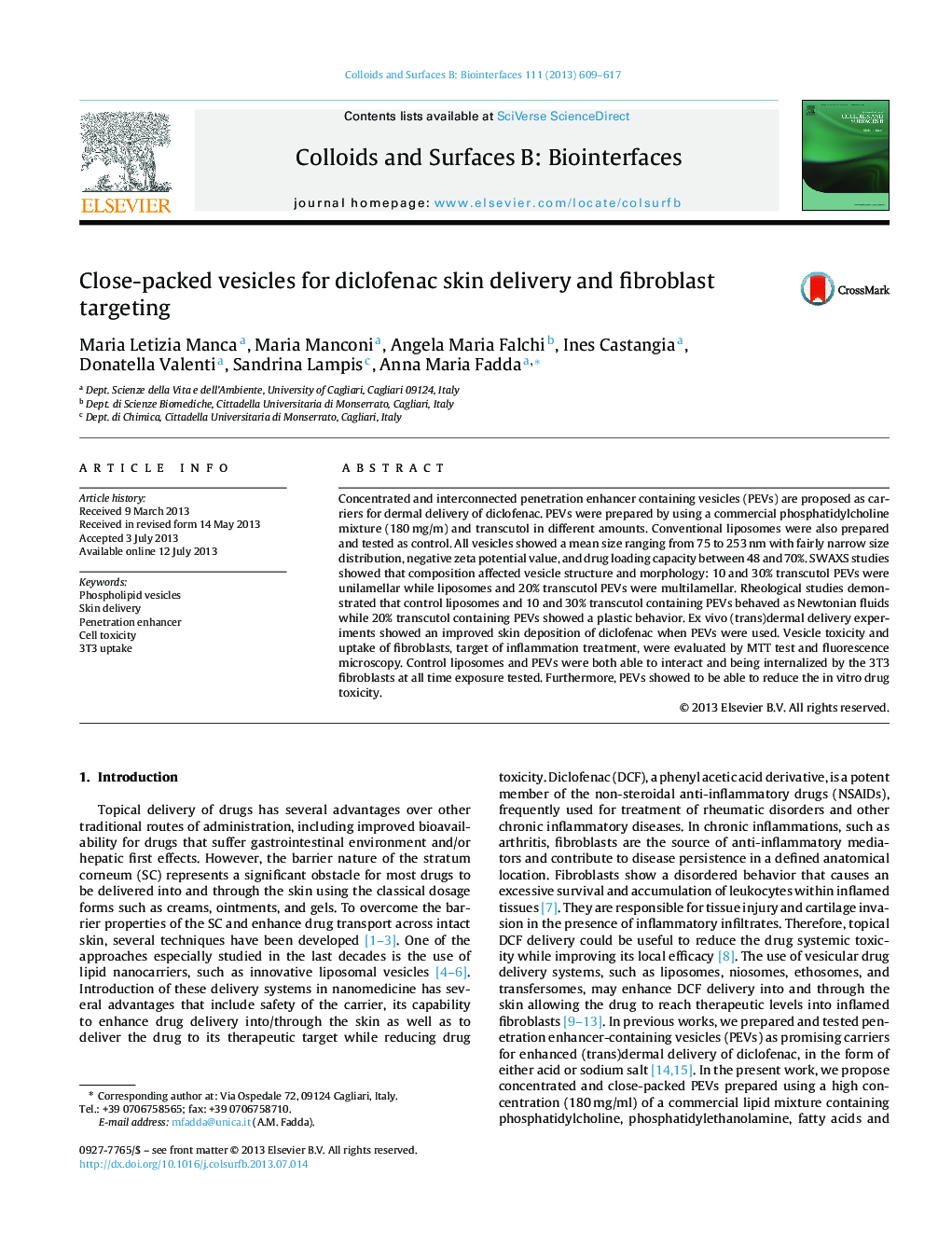| Article ID | Journal | Published Year | Pages | File Type |
|---|---|---|---|---|
| 599859 | Colloids and Surfaces B: Biointerfaces | 2013 | 9 Pages |
•Close packed vesicles were made with phosphatidylcholine and Trancutol®.•Vesicle structure was deeply investigated by SAXS and rheological studies.•Close-packed vesicle expanse structure evolved to single vesicles on the skin.•Vesicles facilitated diclofenac dermal delivery and fibroblast targeting.•Vesicles reduced in vitro drug toxicity and favored drug internalization by cells.
Concentrated and interconnected penetration enhancer containing vesicles (PEVs) are proposed as carriers for dermal delivery of diclofenac. PEVs were prepared by using a commercial phosphatidylcholine mixture (180 mg/m) and transcutol in different amounts. Conventional liposomes were also prepared and tested as control. All vesicles showed a mean size ranging from 75 to 253 nm with fairly narrow size distribution, negative zeta potential value, and drug loading capacity between 48 and 70%. SWAXS studies showed that composition affected vesicle structure and morphology: 10 and 30% transcutol PEVs were unilamellar while liposomes and 20% transcutol PEVs were multilamellar. Rheological studies demonstrated that control liposomes and 10 and 30% transcutol containing PEVs behaved as Newtonian fluids while 20% transcutol containing PEVs showed a plastic behavior. Ex vivo (trans)dermal delivery experiments showed an improved skin deposition of diclofenac when PEVs were used. Vesicle toxicity and uptake of fibroblasts, target of inflammation treatment, were evaluated by MTT test and fluorescence microscopy. Control liposomes and PEVs were both able to interact and being internalized by the 3T3 fibroblasts at all time exposure tested. Furthermore, PEVs showed to be able to reduce the in vitro drug toxicity.
Graphical abstractFigure optionsDownload full-size imageDownload as PowerPoint slide
